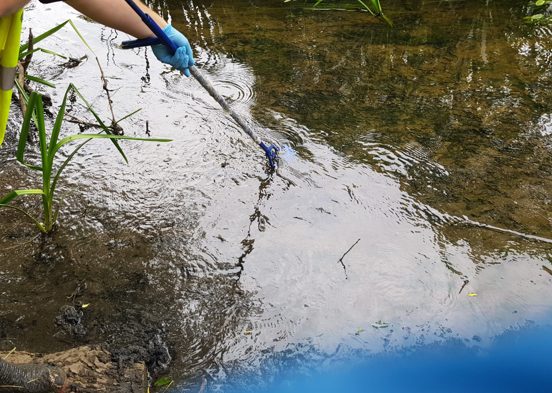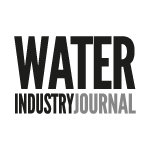By Paul Pickard
The poor condition of the UK’s watercourses, the potential impacts upon human health, and the effects on our native ecology are widely publicised. Recent government statistics show that only 14% or rivers and lakes achieve good ecological status, and 0% achieve good chemical status when persistent, bio-accumulative, toxic substances are included. In recent years, media coverage has brought the subject to the forefront of public discourse, often demonising water companies, but the UK water industry has been aware of the situation for many years and is investing money in investigating and mitigating the effects.
UK Water Industry Research (UKWIR) has been supporting the water industry with the Chemical Investigations Programme (CIP) since 2010. The first iteration, CIP1, was focused on investigating the extent to which wastewater discharges may contribute to chemical concentrations in rivers. The programme has continued and expanded with each new water industry AMP cycle, adding new investigations each time, in response to emerging threats. CIP4 began in early 2025 with a wider variety of investigations than ever.
SUEZ’s UK-based wastewater sampling operation is supporting several strands of the CIP4 investigations. This article focuses on the Anti-Microbial Resistance (AMR) investigation within the CIP4 programme.
Antimicrobial resistance is the evolved resistance of pathogenic micro-organisms to antimicrobials such as antibiotics and fungicides. As bacteria, viruses and fungi become more tolerant to the medicines intended to eradicate them, new antimicrobials need to be identified, trialled and introduced. Left unchecked, it’s not hyperbolic to say that AMR is a major threat to human health and wellbeing.
Understanding antimicrobial resistance in wastewater
Since wastewater treatment in the UK is largely a biological process, the theory is that our wastewater treatment works could facilitate the development of new strains of resistant micro-organisms. The AMR investigations, led by the UK Centre of Ecology & Hydrology (UKCEH) and assisted by ALS Laboratories UK and the University of Bath, are designed to improve our understanding of the prevalence of AMR genes within microbiological populations. The study is also being used to measure concentrations of emerging substances, toxic substances and persistent organic pollutants in wastewater. SUEZ were selected as experts in large-scale wastewater sampling projects to undertake the sampling aspect of the investigation.
SUEZ’s role in national sampling
The water industry selected ten wastewater treatment works across England and Wales, one from each water company region. The sites chosen each employ different methods of biological treatment so that comparisons can be made with regards to the prevalence of AMR genes. Understanding which processes promote or inhibit resistance is important for future mitigation measures.
The objectives of the investigation are to quantify the presence of AMR genes in incoming sewage and in treated effluent being discharged, to understand whether these genes are bolstered or diminished during biological treatment, to monitor the impact of sewage-borne substances on the receiving watercourse, and to measure the concentration of substances within biosolids destined for use in agriculture. This requires SUEZ to take composite samples from the crude influent and final effluent of the works, samples of sludge or biosolids produced at the works, as well as spot samples of river water and sediment, upstream and downstream of the discharge point. All ten sites are visited within a two-month period, and this cycle is repeated six times within a year.
Practical challenges and fieldwork solutions
Before any sampling could begin, all ten sites were surveyed by SUEZ to identify suitable locations on the treatment works for installing refrigerated sampling machines and, more pertinently, accessible locations for obtaining samples of river water and sediment. This exercise brought SUEZ survey staff into contact with local farmers, boat yard owners, amusement park operators, and golf course staff. Upon learning the admirable intentions of the programme, all were keen to help out by granting access to their stretch of river.
The sampling programme is being managed by Ryan Tonge, one of the Project Managers at SUEZ’s Wakefield division, and undertaken by a dedicated team of SUEZ Sampling Technicians. SUEZ teams use specialist sampling equipment to obtain samples of river sediment. If this is not possible due to the composition of the riverbed, biofilm is scrubbed from stones using improvised abrasive tools, otherwise known as toothbrushes. Sites are visited over a two or three day period, depending on proximity to Wakefield, with samples either being dropped at an ALS Laboratories location at the end of the day or preserved overnight in mobile freezers which are powered by leisure batteries. Frozen samples are temporarily stored at SUEZ premises in Wakefield before being transported to UKCEH for analysis.
Results of the investigative programme will be published in an UKWIR report by 2030. Findings will be used to inform future research and control measures with AMR in mind.
____________
SUEZ would like to acknowledge the contributions of the other collaborators on the project:
UK CEH
Dr. Daniel Read – Associate Science Director
Dr. Holly Tipper – Senior Molecular Microbiologist
Dr. Gloria dos Santos Pereira – Head of Centralised Chemistry
University of Bath
Prof. Barbara Kasprzyk-Hordern – Director of Centre of Excellence in Water-Based Early Warning Systems
ALS Laboratories
Bjorn Nielsen – Principal Scientist, Microbiology




